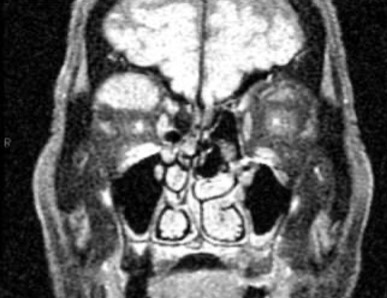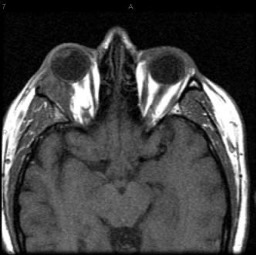<< Dr. Bita Esmaeli's homepage
Orbital Tumors
The orbit is the bony cavity in the skull that houses and protects the eye and its associated structures. Various types of orbital tumors are seen in adults and during childhood.
Lymphoma

Orbital lymphoma is the most common tumor of the orbit and ocular adnexal structures. It is typically a low-grade, non-aggressive type such as marginal zone lymphoma, though more aggressive forms like diffuse large B-cell lymphoma can also occur. Orbital MRI aids in diagnosis, but a surgical biopsy is required to determine the exact lymphoma subtype and guide treatment. Additional imaging, including CT and PET scans, is used for staging. Low-grade orbital lymphoma is commonly treated with low-dose radiation, while more aggressive types may require chemotherapy.
Lacrimal gland adenoid cystic carcinoma

Lacrimal gland adenoid cystic carcinoma is a rare orbital cancer but the most common malignancy of the lacrimal (tear-producing) gland. MRI aids in diagnosis. Clinical signs may include eye bulging (proptosis), pain, displacement of the eye, and double vision. Treatment typically involves surgical removal followed by adjuvant radiation therapy.
Pleomorphic adenoma of the lacrimal gland

Pleomorphic adenoma of the lacrimal gland is a benign tumor and is more common than lacrimal gland carcinomas. It typically presents with slow, progressive downward displacement of the eye. Imaging with CT or MRI usually shows a round, well-encapsulated lesion. The appropriate treatment is complete surgical excision.
Other orbital tumors
A wide range of other lesions and abnormal growths can occur in the orbit. These include orbital rhabdomyosarcoma, most commonly seen in children, as well as solitary fibrous tumors, dermoid cysts, orbital inflammatory syndrome, and IgG4-related disease.